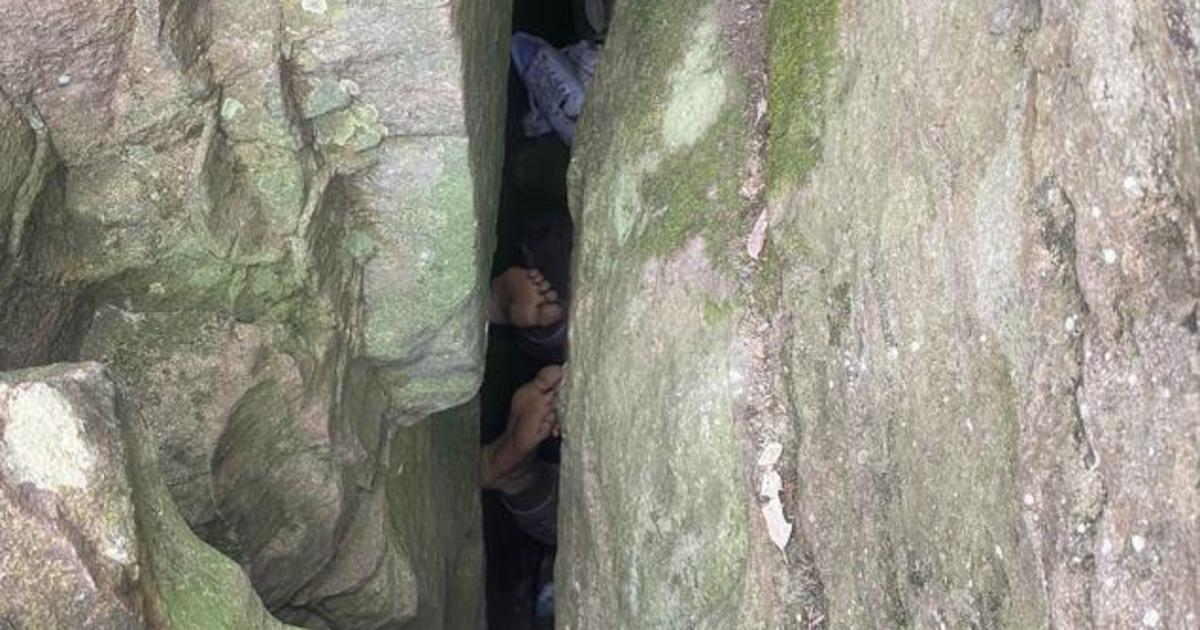A recent incident in Australia highlights the unexpected dangers of seemingly innocuous situations. Matilda Campbell, while attempting to retrieve her dropped cell phone, found herself trapped between two boulders in a 10-foot-deep crevice in the Hunter Valley region. This precarious situation led to a complex and remarkable rescue operation involving multiple agencies and specialized equipment, ultimately underscoring the importance of careful navigation in challenging environments and the remarkable skill of emergency rescue teams. The incident serves as a cautionary tale about the unforeseen risks involved in everyday activities, emphasizing the need for awareness and preparedness, especially in unpredictable terrains.
The Dramatic Rescue Operation
The Initial Incident and Emergency Call
Matilda Campbell’s adventure took a dangerous turn when she slipped into a crevice while reaching for her phone. She became wedged firmly between two large boulders, hanging upside down for over an hour. Her friends, after unsuccessful attempts to free her, immediately contacted emergency services. The precarious nature of her situation and the challenging location necessitated a specialized rescue response. The image of Campbell suspended between the rocks highlights the immediate need for skilled intervention and advanced equipment. This situation perfectly illustrates the unpredictable nature of accidents and how quickly a minor mishap can turn into a major emergency.
The Multi-Agency Response
The response to Campbell’s plight was swift and coordinated, bringing together a multidisciplinary team of experts. A specialist rescue paramedic spearheaded the operation, working alongside other agencies. The initial challenge involved creating a safe access point to reach Campbell, requiring the careful removal of several heavy boulders. This painstaking process demanded both expertise and precision to avoid further compromising Campbell’s safety and potentially causing instability. This collaborative effort highlights the seamless integration of various emergency services to ensure a successful and safe rescue.
Specialized Equipment and Techniques
The rescue required more than just manpower; it involved advanced equipment and specialized techniques. The team strategically utilized a mechanical winch to move a massive 1,100-pound boulder, showcasing the level of engineering expertise and physical strength required in such delicate operations. The creation of a wooden frame provided essential stability for the rescuers as they worked to free Campbell, further underscoring the planning and precision crucial for a successful outcome. The successful implementation of these measures demonstrates the crucial role advanced technology plays in ensuring effective rescue missions in hazardous locations. The event underlines the significance of investing in and continuously developing rescue protocols and tools.
The Aftermath and Lessons Learned
Campbell’s Recovery and Gratitude
Incredibly, Campbell escaped the ordeal with only minor injuries, sustaining cuts and scrapes. Following her rescue, she expressed deep gratitude to her friends and the rescue team on social media, emphasizing their tireless efforts in freeing her from the rocks. Her experience serves as a powerful reminder of the dedication and bravery of first responders and the immense relief a successful rescue can bring. This incident exemplifies the human capacity for resilience and the impact of effective collaborative work under stressful circumstances.
The Importance of Caution and Preparedness
This incident provides a valuable cautionary tale about the inherent risks associated with exploring challenging terrains. While Campbell’s experience is exceptional, it highlights the importance of exercising caution in potentially dangerous locations. People engaging in outdoor activities should carefully assess risks, be mindful of their surroundings, and consider the unforeseen consequences of seemingly trivial events. Even simple activities can quickly turn dangerous, requiring both personal preparedness and access to rapid emergency response. This narrative highlights the role of individual responsibility and awareness in ensuring personal safety. Taking preventative measures before embarking on risky activities and having emergency response mechanisms at the ready, are vital for mitigating potential threats.
Campbell’s Social Media Commentary
In the wake of the incident, Campbell’s posts on social media provide another layer to the story. Acknowledging her accident-prone nature, she playfully commented on her experience and emphasized the importance of responsible decision making moving forward, specifically mentioning she would be limiting rock formations in future exploration. These candid expressions not only enhance understanding of Campbell’s perspective but also emphasize her gratitude and willingness to change behavior moving forward. This aspect highlights the importance of open communication about accident risks and safety behaviors.
Take Away Points
- Emergency rescue operations can require highly specialized skills and equipment.
- Careful planning and coordination between multiple agencies are crucial for successful rescues.
- Even seemingly insignificant activities can lead to unforeseen and dangerous situations.
- Responsible risk assessment and personal preparedness are crucial when engaging in potentially dangerous activities.
- Gratitude and recognition for the dedication and bravery of first responders are vital.









